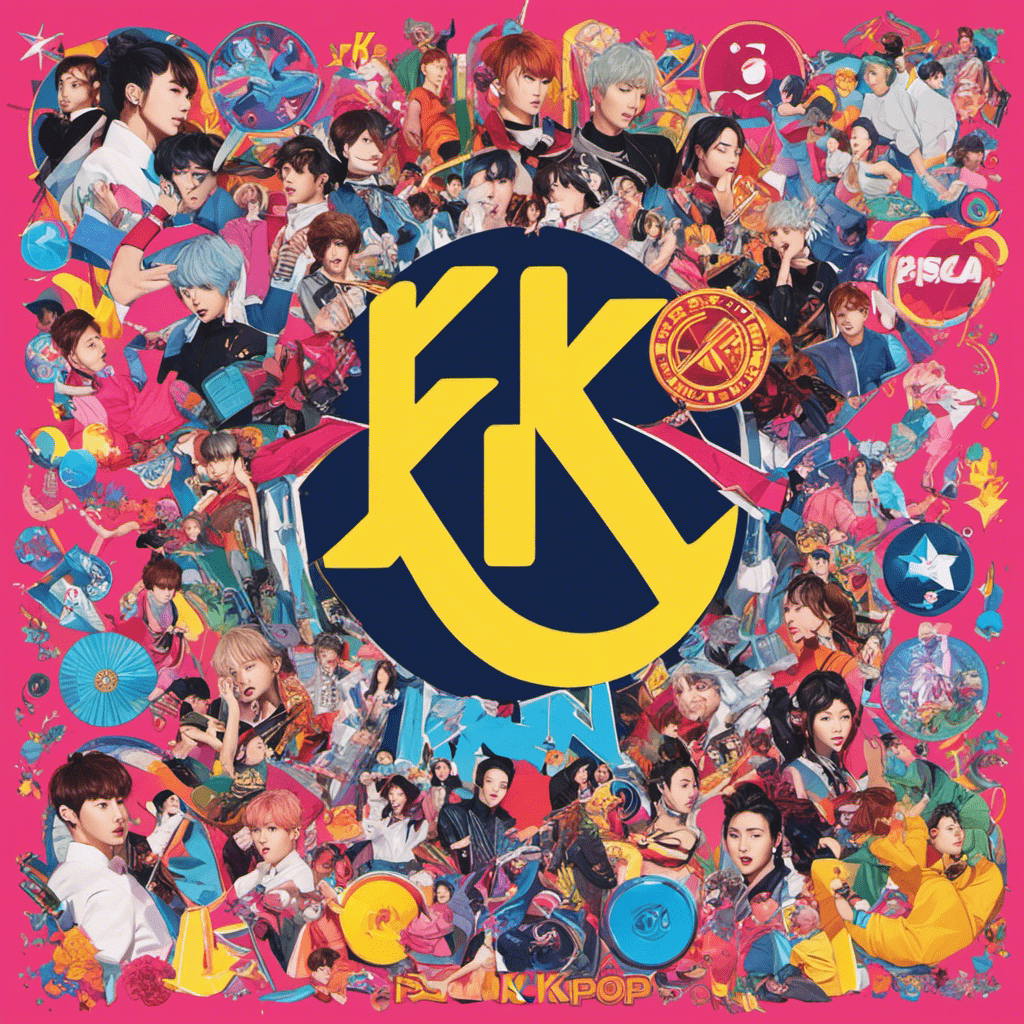K-Pop, a world of pulsating beats and captivating performances, is not just about the music—it’s a whole culture. In this article, delve into the vibrant universe of K-Pop fandoms and unlock the secrets behind the essential terms that every fan, or ‘stan,’ should know.
From trainees to idols, debuts to comebacks, and biases to leaders, this guide provides a comprehensive understanding of the language that fuels the passionate realm of K-Pop.
So, get ready to immerse yourself in the captivating world of K-Pop and become a true stan.
Key Takeaways
- Trainees undergo years of training in dancing, singing, and languages before debuting as soloists or group members.
- Idols are K-pop stars who have debuted and are known for their talent, visuals, and stage presence.
- Debut is the official entry of an artist into the K-pop industry, marked by the release of their first single or public performance.
- Comeback refers to when an idol or group releases a new song, accompanied by promotional activities, and showcases their growth as artists.
The Trainee Journey
The trainee journey in the K-pop industry involves years of rigorous training in dancing, singing, and languages before debuting as soloists or group members. Trainees face numerous challenges during their training period, including intense competition, long hours of practice, and the pressure to meet the high standards set by entertainment agencies.
One crucial aspect of K-pop training is the importance of language proficiency. Trainees are often required to learn Korean, English, and Japanese to communicate effectively with international fans and expand their reach in the global market. Language skills play a significant role in promoting K-pop internationally and establishing connections with fans from different countries.
Therefore, trainees dedicate a significant amount of time and effort to mastering multiple languages, recognizing its significance in their future careers as idols.
Becoming an Idol
Becoming an idol in the K-pop industry requires years of training and honing one’s skills in dancing, singing, and languages. The challenges faced during this training period are immense, both physically and mentally.
Trainees undergo rigorous schedules, often attending dance and vocal lessons for several hours a day, along with language classes to prepare for international promotions. They are also expected to maintain strict diets and maintain their physical fitness.
Additionally, trainees face immense competition, as only a small percentage of them will eventually debut as idols. Talent agencies play a crucial role in shaping the careers of aspiring idols. They scout and recruit trainees, provide them with training resources, and guide them through the debut process.
These agencies invest significant time, effort, and resources into developing their trainees’ skills and preparing them for the highly competitive K-pop industry.
The Significance of Debut
Releasing their first official single or performing in public for the first time marks the official entry of an artist into the highly competitive world of idols. A debut in the K-pop industry is a significant milestone that comes with immense pressure. Artists face high expectations from fans, their entertainment companies, and the industry as a whole.
A successful debut can have a significant impact on an artist’s career. It can lead to increased recognition, a growing fan base, and opportunities for future releases and performances. However, the pressure to succeed can also be overwhelming. Artists strive to stand out in a saturated market and make a lasting impression.
Nonetheless, a successful debut can be a turning point in an artist’s journey. It propels them towards success and establishes their presence in the K-pop industry.
All About Comebacks
Exciting and highly anticipated, a comeback in the K-pop industry signifies the release of a new song by an idol or group. The anticipation of comebacks is a crucial part of the K-pop fandom experience.
Fans eagerly await the announcement of a comeback, speculating about the concept, music style, and choreography. Behind the scenes of comebacks, idols and their teams work tirelessly to prepare for their return. This involves recording the song, shooting music videos, and practicing intricate dance routines. The process often includes intense training, long hours, and meticulous attention to detail.
Fans are given glimpses of these behind-the-scenes moments through reality shows, V Live broadcasts, and social media updates. As the comeback date approaches, fans engage in various activities to support their favorite idols, such as streaming the song, buying albums, and creating fan art.
The excitement and enthusiasm surrounding comebacks further solidify the strong bond between idols and their dedicated fan base.
Unveiling the Maknae
The maknae of a K-pop group is often adored by fans for their youthful charm and remarkable talent. Maknaes are the youngest members of girl groups or boy bands and play a significant role in the dynamics of the group. They bring a fresh energy and cute appeal to the stage, captivating fans with their adorable charm. Maknaes like Jungkook from BTS and Lisa from BLACKPINK have showcased exceptional talent, earning the title of “golden maknae.”
Let’s take a closer look at the charm and talent of maknaes in K-pop:
| Maknae | Group | Notable Talent |
|---|---|---|
| Jungkook | BTS | Singing, Dancing, Rapping |
| Lisa | BLACKPINK | Dancing, Rap |
| Yeri | Red Velvet | Singing, Variety Show Skills |
| Wooseok | PENTAGON | Rapping, Songwriting |
These maknaes not only contribute to the group’s overall success but also have the potential to shine individually. The maknae position holds a special place in the hearts of fans, and their talent continues to unveil new facets of their abilities.
The Aegyo Phenomenon
Fans swoon over the irresistible aegyo displayed by their favorite K-pop idols. These idols captivate fans with their adorable gestures, facial expressions, and cute baby-like voices. Aegyo, a term that describes someone’s cuteness, has become a cultural phenomenon in the K-pop industry.
It is a way for idols to connect with their fans on a personal level and showcase their adorable charm. Aegyo performances have a significant impact on the fan connection as it creates a sense of intimacy and endearment. Fans feel a strong emotional connection with their idols when they witness them performing aegyo, and it further strengthens their loyalty and support.
Aegyo has become an essential aspect of K-pop culture. It allows idols to express their playful and adorable sides while bringing joy and happiness to their fans.

Chanting for Fandoms: Fanchants
During live performances, K-pop idols encourage audience participation by leading fanchants, where fans shout specific phrases and lyrics to show their support and create an energetic atmosphere. Fanchants have become an integral part of K-pop culture, with fans learning and practicing them to perfection. Chanting techniques vary, but the most common method involves dividing the fandom into different sections, each assigned to shout a specific part of the fanchant. This creates a harmonious and synchronized chant that adds to the overall excitement of the performance. Fans play a crucial role in fanchants, not only by memorizing and shouting the chants but also by coordinating with each other to create a unified voice. Fanchants not only show support for the idols but also help fans feel actively involved in the concert experience.
| Chanting Techniques | Fans’ Role in Fanchants |
|---|---|
| Division of Fandom into Sections | Memorizing and Shouting Chants |
| Coordinating with Each Other | Creating a Unified Voice |
| Synchronized Chanting | Active Involvement in the Concert Experience |
Finding Your Bias
When exploring the world of K-pop, discovering one’s bias is an exciting journey of connecting with a particular idol or group member on a personal level. In K-pop, the concept of bias refers to a fan’s favorite member in a group. It is a common term used by fans to express their preference based on personal reasons such as talent, visuals, or personality.
Bias culture is an integral part of the K-pop fandom experience, where fans support and cheer for their bias through various means like fan art, fancafe participation, and attending concerts. Maknae dynamics also play a significant role in bias culture. The maknae, or the youngest member of a group, often captures the attention of fans with their talent and adorable charm.
Exploring bias culture allows fans to feel a deeper connection to their favorite idols and enhances their overall K-pop experience.
The Intriguing Bias Wreckers
The intriguing bias wreckers in K-pop captivate fans with their unexpected charms and have the potential to become their new favorite member in a group. Bias wreckers are members who, despite not being the fan’s bias, possess qualities that captivate and attract fans. They often have a unique talent, striking visuals, or unexpected charms that differentiate them from the rest of the group.
Bias wreckers add excitement and unpredictability to the fandom experience, as fans find themselves torn between their bias and the bias wrecker. Exploring the allure of bias wreckers reveals the impact they have on fandom dynamics. They create friendly competition among fans, sparking debates and discussions about who the ultimate favorite member is.
Bias wreckers also bring fans closer together as they bond over their shared admiration for these captivating members.
The Role of Leaders in K-Pop Groups
Leaders in K-pop groups play a pivotal role in guiding and supporting their fellow group members, acting as a liaison between the group and the entertainment agency. They possess strong leadership skills that are essential in the highly competitive K-pop industry.
These leaders are responsible for ensuring the group’s cohesion, coordinating schedules, and making important decisions on behalf of the group. They also act as a source of motivation and encouragement for their members, helping them navigate the challenges of fame and demanding schedules.
However, being a K-pop group leader comes with its own set of challenges. They have to balance the interests of the members, deal with conflicts, and handle the pressure from both the agency and the fans.
Despite the difficulties, K-pop group leaders play a crucial role in shaping the success and longevity of their groups.
